Orthodontic emergencies aren’t as serious as those found in other areas of the dental field. However, if you do have a problem arise during treatment, you’ll want to know how to deal with it until you can get in to see your orthodontist.
Mouth Sores
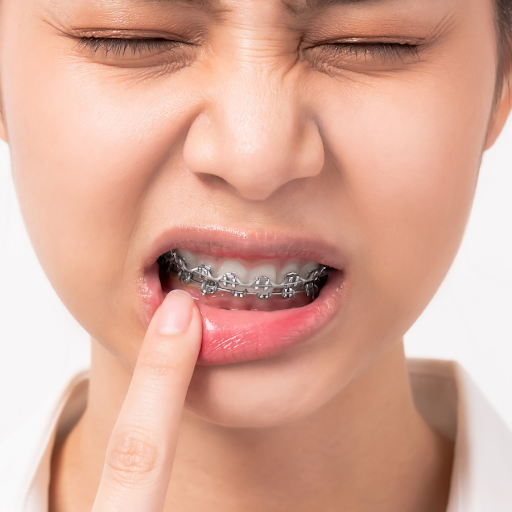
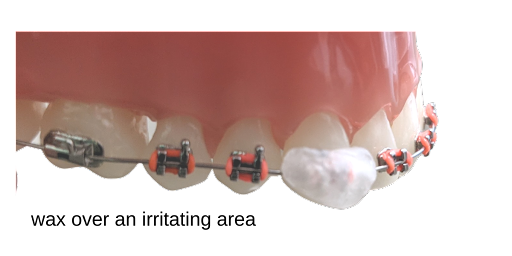
Braces take some getting used to. There’s a lot of hardware going into your mouth next to soft tissues. You will naturally develop calluses on your lips and cheeks in areas of friction. If you are struggling with the adjustment, or have a history of ulcers regardless of braces, use dental wax. To prevent further irritation, pinch off a little piece of wax, press it into a small disc, and mold it over the bothersome area. Warm salt water rinses three times a day can help sooth the ulcer and speed healing. You can also use over the counter oral anesthetic gel to help with pain.
If you are in clear aligners and you find yourself suffering with sore spots that don’t seem to be getting better, call immediately. This is a common sign that your trays are not seating correctly and, therefore, are not working effectively.
Broken Brackets
One of the most common issues we run into are loose brackets. Small, square-shaped brackets are glued to the teeth to engage the wire during treatment. Sometimes, especially during the first couple weeks after getting braces on, the bond between the tooth and the bracket can fail. This can happen for a few reasons.
When putting on braces, the key to a good bond is to assure there is no moisture whatsoever on the tooth. With the back teeth especially, this can be difficult because the saliva tends to accumulate where the bracket needs to go. If the tooth surface is not perfectly dry during the bonding, the glue will not fully secure to the tooth. The bracket will usually pop off with the pressure of the elastic being placed. Sometimes, the bond is strong enough to get past this step but comes off later that week.
The properties of the tooth such as size or shape can also be a reason for a poor bond. For a proper bond, a chemical exchange must take place between the glue and the tooth surface. Especially in the case of a crown, sometimes the properties of the tooth can be less than optimal for an exchange to take place sufficiently. Extra care is needed to prep the tooth and prime it for a suitable bond to take place.
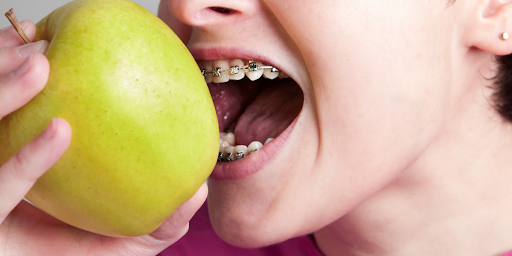
Finally, a very common reason for breaking a bracket is biting down on something like an apple or hard piece of candy. The bond between bracket and tooth is a carefully planned balance due to the semi-permanent nature of braces. It needs to be strong enough to hold for regular wear and tear over the course of treatment, but, at the same time, able to be comfortably removed when finished. A bite with enough torque can break the bracket away from the tooth.
You’ll notice that “emergency” is loosely applied to problems during orthodontic treatment. This is the case with a loose bracket. A worst case scenario, in this instance, would be a back bracket coming off which would free the wire to poke the back of the cheek. This can be painful, and, therefore, would need to be fixed promptly.
While we always like to have everything in perfect working order, functionally, a broken bracket does not require immediate repair and is not going to make a big difference in treatment. If a back bracket comes loose, save it, if possible, and bring it to your appointment.
If it’s not the back bracket, and the colored elastic is still on, it should remain attached to the wire. If you happen to swallow a bracket, don’t worry, it will pass harmlessly.
Wire Issues
Wire problems are probably the most urgent encountered during ortho treatment. An unruly wire can poke into the tender flesh and cause it to become inflamed and possibly bleed. At any rate, it will be uncomfortable. It’s good to know how to deal with this at home quickly to relieve discomfort.
Your archwire is carefully measured by your orthodontist when your braces are put on and at adjustments. As your arch width changes during orthodontic movement, such as in the case of creating or closing space, the wire length is shorter or longer than necessary to span the full arch. Your orthodontist will place a wire that has room to grow depending on the needs of your teeth.
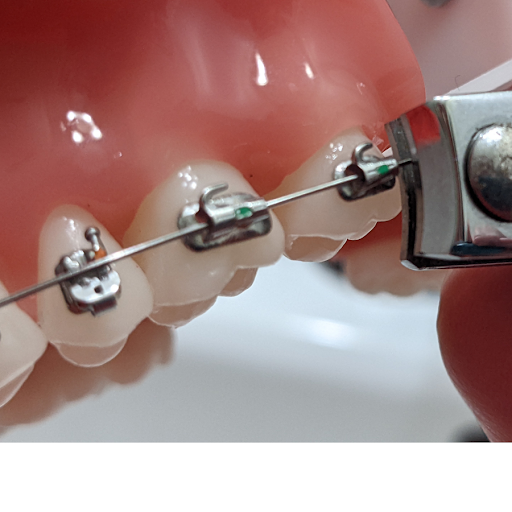
As it gets longer, it can poke the back of your mouth and gums. This can gradually increase and cause more irritation until it is clipped shorter. Try using a cotton swab or tweezers to bend the tip of the wire away from your mouth. Place wax over the tip of the wire to prevent it from poking you, and call the office for an appointment. As a last resort, have a friend help you use a sturdy pair of nail clippers or a clean wire cutter to reach behind the back tooth and clip it down. Use a piece of cotton to catch the wire piece so you don’t swallow it.
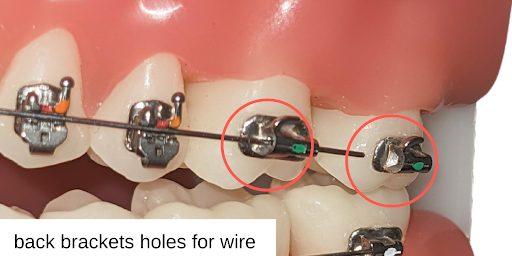
Sometimes, a wire can get pulled out of the terminal hole in the back bracket by some force, like food. If this happens try to grip the wire and guide it back into the small hole of the back bracket.
As the wire is gradually getting shorter, you may have to do this more often until your next appointment when the doctor places a new, longer wire.
If a back bracket has come off and exposed the wire to your cheek, call your orthodontist and schedule an urgent visit. Use the clippers and wax until you can make it in for your doctor to fix the bracket and replace the wire.
Rarely, something can cause the wire to snap completely. It will most likely be held in place by the elastics, but, in this case, you should come in to see your doctor as soon as possible.
Broken Elastics
An elastic or “color,” holds the wire into the bracket on the tooth. In certain instances you may have a fine wire or a “ligature” holding it in securely. Having these colors or ligs changed out at every visit is called “tightening.” Sometimes, a color may snap off the bracket. This is not a serious problem as the force from the surrounding engagements will prevent any considerable changes to the movements due in the time until your next adjustment. Be aware, though, once one color pops off, the likelihood of more following is increased. Multiple missing elastics can reduce effectiveness of your braces, so we would want to get those replaced sooner rather than later.
Appliance Slip
Honestly, appliances are usually not the most comfortable things ever. Mouths seem to be trying to get rid of them at every turn. There are a lot of factors that require perfect maintenance for an appliance to stay in place. Appliance bond breaks tend to happen more often than regular brackets, but, thankfully, in most cases, they don’t need to be worn for nearly as long as braces do. If your appliance is slipping down on the side or has completely come out, call your orthodontist’s office to get it replaced so it can do its job.
Regardless of the problem, always stay in communication with your orthodontist’s office. We can guide you through comfort measures at home, inform the doctor of all concerns and make sure you have an appointment scheduled for your orthodontist to take a look and make sure everything is still working towards your goal to a beautiful smile.




